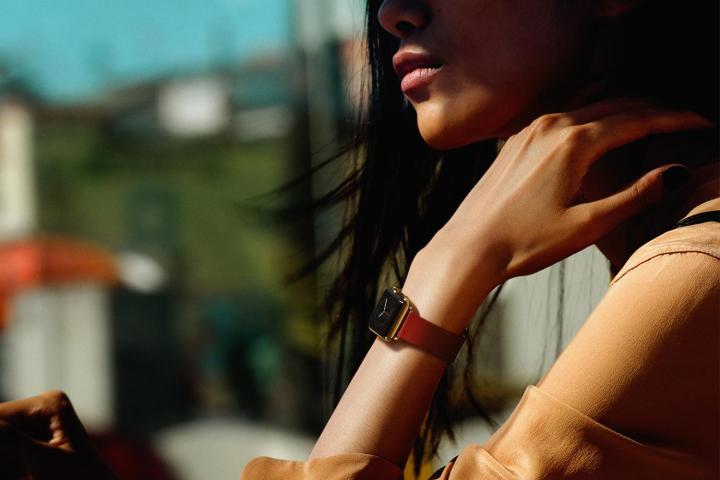
Tech needs to be “broad, seamless, and personal” before it will succeed.
Most of us don’t know what type of wearable device we’d really like, or even if we want one at all. And hardly anyone is buying them. Manufacturers don’t know what to make, so they’re endlessly regurgitating ideas they copy from one another. Yet predictions of how fabulous the wearable life will be are whipping everyone into a frenzy.
The break out device I need to buy has yet to arrive. If wearable technology is going to become the huge industry many analysts are predicting, this has to change. But what shape or form will this breakthrough device take? No one seems to know — and that’s the problem.
How big will the market be?
At the beginning of 2014, Deloitte estimated around 10 million wearable gadgets would be sold by the end of the year. By September, Juniper Research said that number would be more like 27 million. Apparently, we’ll be buying more than 100 million wearable devices in 2017.
No wonder marketers and sales people are getting all hot and bothered about wearable tech. We’re assaulted by amorphous quotes about how amazing it already is, or will be in the very near future. The head of social and content at U.K. comparison website Confused.com said wearable tech will have a big impact on social media and marketing because of the data the hardware can provide. The CEO of fashion brand AllSaints said “wearables have a key part to play in the future of fashion retail.” It’s a shame neither actually provided any detail. Is it because they, along with many others, simply don’t really know how or even why yet?

More bizarrely, according to SalesForce, a third of adults surveyed in the U.K. and the U.S. said “wearable technology has helped their career development,” and using it can increase “employee satisfaction by 3.5 percent.” Who are these people? It certainly wasn’t me. I work with wearables quite a bit, and while I’ve liked several, I’ve not been made CEO yet, and don’t wake up 3.5 percent happier in the morning. Clearly, I’ve liked the wrong ones.
Massive hype means huge expectations
According to the Hype Cycle graph created by analysts at Gartner, wearable tech is almost at the very top of its “peak of inflated expectations,” alongside the Internet of Things, autonomous vehicles, and crypto currencies. You know, things thar sound cool but aren’t even close to being useful in the real world.
All this has made us expect an awful lot from gadgets we wear on our bodies. This survey says 73 percent of those excited about wearable tech want it to make entertainment and media more fun, while 80 percent wanted the gadgets to make “health care more convenient.” When out shopping, 72 percent of those asked wanted their wearable to enable an improved customer service experience, while almost all wanted it to provide rewards in stores they frequented most regularly. With a list of requirements like this, it’s no wonder our dream wearable hasn’t been made yet.
For wearables to succeed beyond what they are now, they need to cut ties with our smartphones.
Samsung hasn’t been put off, and to help sell its range of wearable tech this year, it commissioned a study in the U.K., which concluded wearables would be this Christmas’s hot product, with sales of more than £100 million expected. Unsurprisingly, it called 2014 the year wearable tech would “break into the mainstream consciousness.” Quite why Samsung thinks this will happen when it locks its own products down so they only work with other Samsung devices is utterly beyond me.
Weirdly, this at least makes Samsung’s products different from the competition. Most Android Wear smartwatches, fitness bands, and largely useless pieces of smart jewelry do the same thing; your preference comes down to which design you like best.
Where’s the genre-defining moment?
John Carpenter’s Halloween defined horror movies for more than a decade after it was released. Nirvana’s Nevermind led an entire musical genre into the mainstream, and Apple’s iPhone made the smartphone a household name. Wearable tech needs its genre-defining device — and soon. We’re here now, and we’d quite like to be entertained.
Am I saying Apple’s about to come crashing in, like a masked, knife-wielding maniac, with the Apple Watch, steal the limelight and claim all the glory? No, sorry. The Apple Watch isn’t likely to bring enough to the wrist to convert many doubters, but that’s not the reason it won’t define wearables. It’s because it’s still a slave to the smartphone, just like the vast amount of other smart watches and wearable devices out there.
When I say we need a break-out device soon, I meant it literally. For wearables to succeed beyond what they are now, they need to cut ties with our smartphones. Only by freeing its slaves will wearable tech grow beyond being an accessory that neither complements nor greatly improves our mobile lives.
Motorola’s Technical Leader Rachid Alameh gets it, saying at a recent conference the tech needs to be “broad, seamless, and personal” before it will succeed. Only when wearable devices become genuinely useful as standalone products — and no, I’m not talking about the Neptune Pine and its ilk — will the rabid hype be justified.



